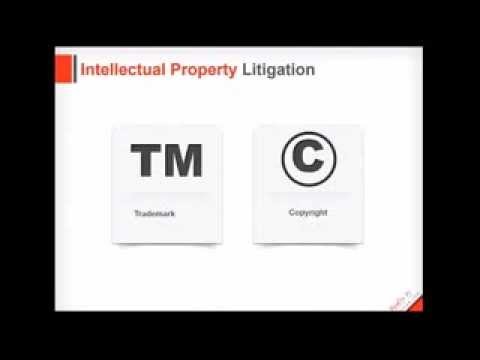Returns Drive Fees In Private Equity And Hedge Funds
Post on: 2 Январь, 2016 No Comment

Follow Comments Following Comments Unfollow Comments
If returns are meant to justify the fee levels being charged by private equity and hedge funds, then it is incumbent on all parties to clearly understand and report these returns accurately.
To measure the performance of a fund, several important pieces of information are required. These include the money provided by investors; when the money was put into the fund (e.g. all at once or in stages) and how the cash was used (e.g. investment or management fees); the distribution of cash and investment held; and the valuation of each unrealised investments currently held. Equally important, this information must be correct, current and complete. In particular, valuation of unrealised, illiquid investments can be the most problematic for both private equity and hedge funds, and leads to potential differences in practice.
Private equity has evolved its own particular means of measuring and comparing performance, which integrates a duration component in to the calculation. The key concept in measuring performance in private equity funds is the internal rate of return (IRR). The IRR is the net return earned by investors over a particular period, calculated on the basis of cash flows to and from investors, after the deduction of all fees, including carried interest.
IRR is a time based concept. As holding periods for investments lengthen, this performance measurement will fall significantly. It is not sufficient to simply know the increase in value of an investment between acquisition and realisation (e.g. 2X). One must also know the length of that period (e.g. two years or five years). Simply put, doubling your money in two years is much, much better than doubling your money in five years. This fact goes some way towards explaining certain differences in the investment preferences and behaviour of financial buyers, such as private equity funds, and trade buyers.
Recent research has focused on an interesting trait of successful private equity funds. Apparently, the most successful investments of a fund account for a significant amount of its ultimate IRR. As a result a small number of exceptional realisations can be more important to a fund’s success than more consistent performance across the portfolio. This may explain the tendency of many in the private equity industry to focus on big, home-run returns on investments that can do well quickly.
In recent years, IRR numbers for leading private equity firms have become increasingly easy to come by. Notably, a number of US institutional investors (primary public pension plans who are entrusted the savings of teachers, policemen, firemen and other government employees) in private equity have begun publishing the performance of their fund participation. A string of legal cases may compel such disclosure in the future where the investors are US public entities subject to state “sunshine” laws. The accumulation of such piecemeal disclosure may have a significant long-term impact on the industry, by driving the overall shift towards increased consistency in reporting performance and, ultimately, benchmarking between funds.
Despite its prevalence, IRR has certain features that are important to understand in order to use the data effectively. For example, the ability of private equity funds to distribute shares of portfolio companies to investors in specie can have certain potentially negative impacts on the IRR calculation. Upon an IPO, despite a lock-up period restricting the ability of holders of a security to sell in the market, the value of the security at the time of its distribution is the value used by fund managers in calculating IRR. However, investors may receive significantly less than that amount at the end of the lock-up period when the shares are freely traceable.
Also, the distinction between gross IRR and net IRR is crucial. From gross IRR must be deducted the asset-based management fees, any expenses paid by the fund and, most importantly, the cost of “cash management” relating to the money not yet drawn down by the fund. As the ultimate return to investors will be the net IRR, knowledgeable investors will attempt to focus fund compensation arrangement to the greatest extent possible on net, rather than gross, performance. Effective cash management, which is ultimately in the investors’ control, is also crucial to achieving desired rates of return.
Equally important, little insight is typically gained from comparing the funds at different points in their life cycle. As a result, funds are frequently compared against other funds which launched in the same year, giving rise to the concept of “vintage year”. Because of the relatively constrained period of time within which a private equity fund must drawdown and invest its capital, the concept of “vintage year” has become frequent topic of discussion and debate in the industry discussed. Funds with the same vintage year are thought to have experienced similar economic environments, making comparisons amongst them more meaningful.
There is a very important step that must be taken, however, before performance can be calculated – valuation. Without correct values for every security and financial instrument in the fund, any attempt to measure performance will end up a useless nonsense.

Funds must put in place procedures for valuing the investment that they hold. As a result of lack of appropriate knowledge or controls, errors in valuation can arise that materially affect a fund’s net asset value. In extreme situations, these inconsistencies can lead to the collapse of a fund. Reliable valuations are, therefore, necessary to maintain investor confidence in the alternative investment funds buying and selling such assets.
While prices for listed securities will be generally accessible, unlisted securities and derivatives can be much more problematic. Where the underlying assets are illiquid (such as interests in unlisted companies) the need for standardised valuation procedures is absolutely crucial. In the absence of an agreed valuation approach, investors in the same asset can receive radically different values for their interests based on the differing method applied by their fund managers. The increased disclosure from US pension plans mentioned above as further highlighted these disparities.
Valuation guidelines, therefore, are very important. The goals of any valuation guidelines are quite straight-forward: transparency, comparability, and consistency. However, the role of the fund manager’s judgment will always play a key role in the valuation process. This is unavoidable, given their extensive prior history with the investment. As a result, specially constituted valuation committees, staffed by select fund investors, are increasingly being established to adopt and monitor the valuation policy to be followed by the fund manager.
Unlike private equity funds, hedge funds typically hold highly liquid, readily valued investments. However, at times they may instead hold thinly-traded illiquid investments. In such instances, these investments may be held in separate accounts known as “side pockets”, which can impact the timing and amount of redemption proceeds returned to investors over the course of their investment. Without side pockets separating the illiquid investments from the liquid portions of the portfolio, it would be very difficult for these hedge funds to continue honouring the redemptions they received, without potentially harming the interest of the non-redeeming investors.
For any fund holding assets that are not freely transferable, whether that is illiquid, thinly traded securities held by a hedge fund or investments by private equity funds in companies that have not yet been exited, this “unrealised portion” of the fund’s portfolio is a crucial factor in ultimately determining both the past and the future performance of the fund.
Valuation of the unlisted portfolio companies that are at the heart of most private equity funds can be a surprisingly subjective business. As Julie Creswell of the New York Times aptly pointed out in January 2011 in connection with the private equity acquisition of Freescale Semiconductors, “The owners – the Blackstone Group, the Carlyle Group, Permira Advisers and TPG Capital – disagree on its value. What they do agree on is that the deal, one of the biggest buyouts of all time, has been a troubled investment. Blackstone calculates that each dollar of its initial stake in Freescale is now worth 45 cents, Carlyle and Permira value their positions at 35 cents on the dollar, and TPG at 25 cents, according to investors in the buyout funds.”














